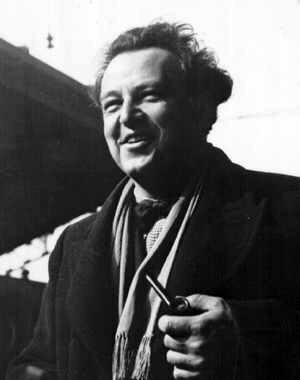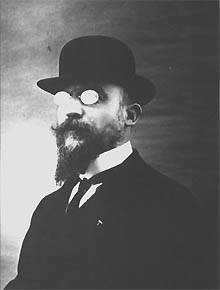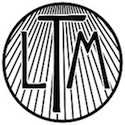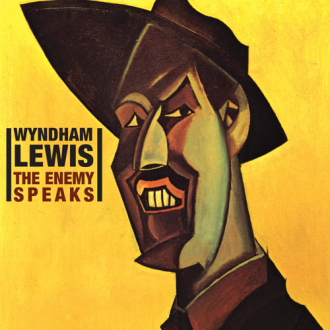Avant-Garde Art \ Van Doesburg: Repertoire De Stijl - Bauhaus - Dada [LTMCD 2495]
A comprehensive overview of the avant-garde piano repertoire of Nelly (aka Pétro) van Doesburg, performed at De Stijl, Dada and Bauhaus events in Europe between 1920 and 1925.
Born in the Netherlands in 1899, Nelly met dynamic De Stijl founder Theo van Doesburg in 1920. Over the next decade the couple lived in Wiemar, where Theo was an associate of the influential Bauhaus art and architecture school, and then Paris. A conservatory-trained pianist, Nelly often accompanied her husband's lectures with carefully selected modernist piano pieces, as well as performing at Salon Dada soirees organised by Theo with Kurt Schwitters in Holland and Germany during 1922/23. Following Theo's premature death in 1931, Nelly established the De Stijl archive.
The pieces on this 76 minute CD are performed by Dutch pianist Peter Beijersbergen van Henegouwen, and include material by Erik Satie, Josef Matthias Hauer, Arnold Schoenberg, Francis Poulenc, Arthur Honegger and Jacob van Domselaer, whose austere Proeven Van Stijlkunst (1913-17) represents the application of Piet Mondriaan's neo-plastic principles to musical composition.
The CD features a deluxe booklet with archive images and detailed historical notes.
Tracklist:
1. GIAN FRANCESCO MALIPIERO Barlumi (1917)
2. JAKOB VAN DOMSELAER Proeven Van Stijlkunst (1916)
3. FRANCIS POULENC Trois Mouvements Perpétuels (1918)
4. JOSEF MATTHIAS HAUER Tanz Op. 10 (1915)
5. VITTORIO RIETI Tre Marcie Per Le Bestie (1920)
6. ARNOLD SCHOENBERG Sechs Kleine Klavierstücke (1911)
7. ARTHUR HONEGGER Trois Pièces Pour Piano (1915-19)
8. ERIK SATIE Ragtime Parade (1919)
9. DANIEL RUYNEMAN Hallucinate (1915)
10. EGON WELLESZ Eklogen Op. 11 (1912)
11. NINO FORMOSO Ti-Ta-To
Available on CD and digital (MP3 or FLAC). To order please first select correct shipping option (UK, EU or Rest of World) and then click on Add To Cart button below cover image. Digital copies are supplied to customers via email link.
Reviews:
"The relationship between the original Dadaist movements - plural, as the style found distribution among a number of international cities - and music is an aspect of early modernism that remains under-investigated. Although Erik Satie's connection to Dada isn't in dispute, outside of concretism Marcel Duchamp's two aleatoric compositions and the work of Edgard Varese of the New York group (which he destroyed), it might seem that Dada was simply not invested in music in the same way that the Russian and Italian Futurist movements were. Dada had a tendency to borrow artistic statements from various disciplines, setting up ordinary household items as art objects or transforming trash found in the street into paintings. LTM's CD Nelly (Petro) van Doesburg Piano: Repertoire de Stijl: Bauhaus, Dada, demonstrates how the Dadaist movements "borrowed" works of musicians with whom they shared mutual sympathies.
Nelly van Doesburg was the wife of Theo van Doesburg, founder of De Stijl in Holland, a concrete poet under the pseudonym of "I.K. Bonset" and a major mover in Dutch Dada and certain of the German Dadaist congresses. This recording is not made up of Nelly van Doesburg's playing, which is apparently lost to us, but of her repertoire, rendered here by pianist Peter Beijersbergen van Henegouwen. Information about her concert choices was extracted from the concert programs that van Doesberg played at Dadaist events in the 1920s when she was recognized by the press as the "indisputable voice of the Dada movement in Europe." Beijersbergen van Henegouwen accessed a number of the scores in this recording through van Doesburg's own copies of music that she played, including the silly polka Ti-Ta-To by Italian Nino Formoso that van Doesberg may have adopted only as it had a futurist design on the front cover.
Some of the music is familiar - Schoenberg's aphoristic Sechs kleine klavierstucke Op. 19, Poulenc's Trois mouvements Perpetuels, and a solo piano version of the "Ragtime" from Satie's arch-Dadaistic ballet Parade. Other composers we know, but they are represented in unfamiliar works; Malipiero's suite Barlumi (1917), Honegger's Trois Pieces pour piano (1915-1919), or Vittorio Rieti's Tre Marcie per le Bestie (1920), mysterious, experimental, and dissonant pieces rather unlike the neo-Classical Rieti that we mostly know.
Unfamiliar composers take up a third of the program - who has heard of Jakob van Domselaer's Proeven van Stijlkunst or Daniel Ruyneman's Hallucinatie? That is one of the values of such a compilation; the program makes available for the first time a number of pieces only known from their listings in Dadaist handbills. Does all of the music evoke the essence of Dada? Not necessarily, but it does connect strongly with their scavenging spirit, the willingness to take something out of context, and put it up before us and say, "Now why don't you see this as we see it?" Peter Beijersbergen van Henegouwen performs the pieces in a straightforward, no-nonsense manner, and LTM's recording is clean and direct" (All Music Guide, 08/2007)


![Nelly (Petro) van Doesburg Repertoire De Stijl [LTMCD 2495]](../images/ltmcd2495.jpg)

Known more often as Nelly, Petronella van Moorsel was born on 27 July 1899 in The Hague, Holland. Raised in somewhat conservative surroundings, she gained a music diploma in piano at the Royal Conservatory in The Hague, where she studied under Willem Andriessen. However, after her first meeting with the artist Theo van Doesburg in July 1920, Nelly found herself drawn to the modernist period that followed the First World War.
The son of a photographer, Theo van Doesburg was born Christiaan Emil Marie Kupper in Utrecht on 30 August 1883. A painter, writer, architect, typographer and theorist, the avant-garde polymath is best known as a founder and leader of the Dutch art movement De Stijl (The Style, pronounced dee-stail), first manifest as a magazine in May 1917, around which a circle of artists gathered including Piet Mondrian, Bart van der Leck, Gerrit Rietveld, Antony Kok, Vilmos Huszar and J.J.P. Oud.
Principles advocated by De Stijl included utopianism and abstraction, the latter through a strict reduction of form and colour. Visual art adhered to strict rules of geometry, under which only straight lines (horizontal and vertical), right angles and rectangular forms were allowed, and only primary colours in addition to black and white. These works (typified by the grid-like Composition paintings of Mondrian) avoided symmetry and attained harmony and balance by use of opposition. Other De Stijl artists such as Rietveld created furniture, typography and architecture, and the movement would have a profound effect on the development of abstract art, as well as modern architecture and design.
After 1921 Theo van Doesburg also became interested in other avant-garde developments such as Dada and Constructivism, publishing Dada poetry under the pen-name I.K. Bonset in De Stijl, as well as a new magazine, Mecano, four issues of which appeared during 1922/23. For his 'anti-philosophy' writings Theo adopted yet another pseudonym, Aldo Camini.
In 1921, Nelly broke with her past and embarked upon a somewhat uncertain relationship with Theo (they would not actually marry until 1928). For the next few years the pair travelled continuously in Europe. Since Theo was an inveterate lover of pseudonyms, it followed that Nelly van Moorsel became P�tro van Doesburg in her role as an avant-garde pianist.
Under Theo's influence her affinity with modern music bloomed, and between 1920 and 1923 Nelly built up a progressive and avant-garde repertoire, an important part of which can be heard on this CD. Suitable scores were obtained through several channels. Following their first meeting in 1920, Theo sent her a selection including two by Erik Satie, Ragtime Parade and Trois Morceaux en forme de poire. During 1921 and 1922 Nelly regularly performed as an integral part of Theo's lectures, in which the choice of music reflected their new ideas in art and architecture. This prescient exercise in multi-media synaesthesia included playing sections from van Domselaer's Proeven van Stijlkunst against the background of a slide-show illustrating the work of De Stijl artists.
Naturally Nelly performed Proeven van Stijlkunst by the Dutch composer and De Stijl associate Jacob van Domselaer. Experiments in Artistic Style was an austere, mathematical cycle written between 1913 and 1916, and in accordance with Piet Mondrian's key abstract theory of neo-plasticism. Mondrian's best and most quoted expression of his theory is drawn from a letter written in 1914: "I construct lines and colour combinations on a flat surface, in order to express general beauty with the utmost awareness. Nature (or, that which I see) inspires me, puts me, as with any painter, in an emotional state so that an urge comes about to make something, but I want to come as close as possible to the truth and abstract everything from that, until I reach the foundation (still just an external foundation!) of things� I believe it is possible that, through horizontal and vertical lines constructed with awareness, but not with calculation led by high intuition, and brought to harmony and rhythm, these basic forms of beauty, supplemented if necessary by other direct lines or curves, can become a work of art, as strong as it is true."
After April 1921 Theo van Doesburg began to spend extended periods in Weimar, Germany, where he hoped to bring De Stijl to the radical Bauhaus art and architecture school. Bauhaus director Walter Gropius admired the strict geometry and collective ideals of De Stijl, as did Marcel Breuer and Ludwig Mies van der Rohe, but he declined to offer Theo van Doesburg a teaching post. As a result, Theo arranged rival De Stijl classes of his own in Weimar, much to the annoyance of Gropius. Together with El Lissitzky and Kurt Schwitters, in 1922 van Doesburg also organized two Dada/Constructivist congresses in Dusseldorf (29-31 May) and Weimar (25 September). Nelly performed at both.
During a three-week period of musical study in Vienna in December 1921, Nelly established contact with Josef Matthias Hauer, who gave her a bundle of scores, including some of his works based on his own 12-tone system. Hauer was also linked to the Bauhaus school, and between 1919 and 1923 engaged in tone/colour experiments with influential early Bauhaus master Johannes Itten. In Vienna Nelly also became friendly with Egon Wellesz and Paul Pisk, both former pupils of Arnold Schoenberg. The connection between the Bauhaus and serialist schools is more fully explored on the LTM CD Bauhaus Reviewed 1919-1933.
At the home of Alma Mahler (widow of Gustav and then married to Bauhaus director Walter Gropius), Nelly also met the young Italian composer Vittorio Rieti. Rieti had recently composed Tre marcie per le Bestie, and this trio of playful Satie-esque, neo-Dada marches would become a permanent feature of her performance repertoire.
Following the Congress events in Dusseldorf and Weimar, Nelly performed at two other Dada events organised by Theo in Germany, at Jena (27 September) and Hanover (30 September). These were spirited occasions, and it was in Jena that Nelly was described as the "indisputable voice of the Dada movement in Europe". Other artists such as Kurt Schwitters, Tristan Tzara and Hans Arp also contributed to these events, while Theo delivered his I.K. Bonset Dada sound poems.
Between January and March 1923 Theo, Nelly, Kurt Schwitters and Vilmos Huszar arranged a Dutch Dada campaign (or series of 'kleine Dada soirees') across Holland, visiting Den Haag, Haarlem, Amsterdam, Leiden, Rotterdam, Utrecht and Drachten. It seems that Tzara was invited to take part, but was otherwise engaged in Paris. This series of shows provoked both excitement and violence, and the iconic poster is featured within the booklet of this CD. Among the pieces performed by Nelly on this tour were the Ragtime from Parade by Erik Satie, albeit re-titled Ragtime Dada in the publicity. Indeed Satie was a keen Dada activist at this time, and Trois morceaux en forme de poire would be performed by Satie and Marcelle Meyer at Tzara's riotous Soiree du Coeur a barbe in Paris on 23 July 1923. Satie's Dada adventures are more fully explored on the LTM collection Dada Works & Entr'actes.
In April 1923 Theo and Nelly themselves moved to Paris. Here Nelly frequently visited Arthur Honegger, performing his compositions (including Trois Pieces pour piano), as well as collecting music by other members of the group christened Les Six, including Georges Auric, Darius Milhaud and Francis Poulenc. The youthful and unconventional Groupe des Six was less a movement than a convenient label, applied by the critic Henri Collet in January 1921 and endorsed by Jean Cocteau. However, at this time their pianist of choice remained Marcelle Meyer (1897-1958), the young virtuoso also favoured by Satie. Their work is more fully explored on the LTM collection Cocteau, Satie and Les Six.
Indeed Nelly seldom gave solo performances, two exceptions being a recital in The Hague on 4 April 1923 and another in Hanover at the end of January 1925. Of her piano interpretations critics wrote that "she played like a crazed cat pounding up and down the keys" and "very agreeable music to listen to and played with great skill." As well as the composers included on this CD, her repertoire also included works by E.L.T. Mesens (Drie composities voor klavier), Georges Ribemont-Dessaignes (Le nombril interlope, Le Pas de la Chicorée frisée) and Herwarth Walden (Schwertertanz Op 18).
In 1927 Theo began working on the stylish multi-media Café l'Aubette on the Place Kleber in Strasbourg, together with Sophie Tauber and Hans Arp, although during this period he and Nelly endured financial problems. The pair finally married on 24 November 1928. Sixteen years younger than her husband, Nelly was his third wife. Theo fell out with Arp and Tauber over money, and their plan for a shared studio house fell through. However in 1929 an inheritance allowed Theo to design and build a De Stijl studio house at Meudon, south-west of Paris, marking his evolution from painter-poet to architect-painter. The house took the form of two interlocking cubes - one a dedicated studio space, the other a domestic area.
After a turbulent decade the couple had little time to enjoy the finished building. At the end of February 1931 Theo's asthma obliged him to move to a sanatorium at Davos, in the Swiss Alps, where he died on 7 March following a heart attack. Following his untimely death at just 47, Nelly issued a final edition of the journal De Stijl, and spent the next few decades organizing exhibitions promoting her late husband's work, and abstract art in general. She also set up the Van Doesburg Stijlarchief to preserve Theo's various works, entered into a relationship with Bauhaus director Mies van der Rohe, and after 1939 acted as an advisor and buyer for Peggy Guggenheim.
Petronella van Doesburg died aged 76 on 1 October 1975, at the studio home at Meudon. In 1981 the archive, library and building was donated to the Dutch State by her niece and heiress, Wies van Moorsel.
Repertoire De Stijl : Bauhaus : Dada

Gian Francesco Malipiero (1882-1973): Italian composer and musicologist born in Venice, who studied with Marco Enrico Bossi and Claude Debussy, and was also self-taught. Via his friend Alfredo Casella, Malipiero first heard The Rite of Spring in 1913, and would compare the experience to awakening "from a long and dangerous lethargy". Written in 1917, the luminous Barlumi ('Glimmers' or 'Glints') at times appear unsettled; the two shortest movements (the third and fifth) even hint at violence, and are perhaps a reference to the First World War. The composer always insisted that Barlumi be performed as a whole or not at all. In 1923 Malipiero joined Casella and poet-activist Gabriele D'Annunzio in founding the Corporazione delle Nuove Musiche, or Corporation for New Music. Although he found early favour with Mussolini, his modernist music was banned in Nazi Germany. Malipiero also wrote extensively on art and music, residing in the small town of Asolo from 1921 until his death.
Jakob van Domselaer (1890-1960): Dutch composer and pianist born in Nijkerk who studied in Utrecht and Berlin (1911). In 1912 van Domselaer travelled to Paris, where he met Piet Mondrian, and would later join the De Stijl circle. His seven-part piano cycle Proeven van Stijlkunst (Experiments in Artistic Style) was written between 1913 and 1916, and applies Mondrian's principles of Neo-Plasticism to music. Austere and math-based, incorporating 'horizontal' and 'vertical' musical elements, these pieces represent an important precedent to minimalism. From 1920 until his death van Domselaer lived in the village of Bergen in the north of Holland. Although obscure in his lifetime, his music has enjoyed a posthumous revival of interest.

Francis Poulenc (1899-1963): French composer and pianist, born in Paris but supposedly rejected by the Conservatoire there on account of his admiration for Stravinsky and Satie. Only later would Poulenc study under Ricardo Vines and Charles Koechlin. Trois mouvements perpetuels is one of Poulenc's best-known piano pieces, written in Paris in 1918 while the composer undertook national service as a typist at the Ministry of Aviation. This cycle of three 'ultra-easy' miniatures combines flippant Parisian urbanity with provincial simplicity, and was popularized by Vines. In January 1921 Poulenc became formally associated with Les Six, along with Arthur Honegger, Georges Auric, Darius Milhaud, Louis Durey and Germaine Tailleferre. Cocteau caricatured Poulenc (with his approval) as a pig.
Josef Matthias Hauer (1883-1959): Austrian composer and theorist Josef Matthias Hauer pioneered a form of twelve-tone (zwôlfton) composition independently of Arnold Schoenberg, although his reputation remains subordinate. In May 1919 Hauer met the Swiss theoretician Johannes Itten, an influential early Master at the Bauhaus. Both worked on synaesthetic theories and constructs by which tones were assigned to colours (Klangfarben und Farbklange). An interest in Eastern mysticism brought Itten into conflict with Gropius, and he left the Bauhaus in 1923, a split which also ended Hauer's contact with the school. At about the same time Hauer's simmering rivalry with Schoenberg finally came to a head. Like Schoenberg, his career was stymied by the ascent of Nazism, under which his Modernist music was denounced as decadent, and his scores included in a touring exhibition of 'degenerate' art (Entartete Kunst). Together with Schoenberg and Theodor W. Adorno, Hauer inspired the character of Adrian Leverkuhn in Thomas Mann's famous novel Doktor Faustus. His piece Tanz Op. 15 (1915) is written on diatonic principles, which gives it a whimsical character.
Vittorio Rieti (1898-1994): born into a wealthy family in Alexandria, Egypt, Rieti subsequently relocated to Milan to study economics. He then studied music under Alfredo Casella and Ottorino Respighi, developing an elegant, melodic, tonal style; during a sojourn in Paris in the mid 1920s he would also compose for Serge Diaghlev and the famous Ballets Russes. Being Jewish, in 1940 Rieti quit Europe for the United States, where he taught composition in Baltimore and Chicago. His neo-classical Tre marcie per le Bestie (Three Marches for Creatures) dates from the 1920s and offers witty, satirical portraits of a dead canary, a crocodile wedding and a military procession of ants.

Arnold Schoenberg (1874-1951): Austrian composer Arnold Schoenberg is renowned as an innovator of serialism, the twelve-tone (or dodecaphonic) method of composition, and by some as an enemy of tonality. The first three serial works (Op.23, Op.25 and Serenade) were written between 1920 and 1923; he was also a painter. Although Schoenberg never taught at the Bauhaus, on 27 October 1922 his influential Expressionistic song cycle Pierrot Lunaire was performed at a Bauhaus-sponsored concert at the Armbrust-Sall in Weimar, and in 1924 he joined the governing board of the curatorial 'Circle of Friends of the Bauhaus.' Schoenberg was also a close friend of Wassily Kandinsky, to whom he wrote in July 1922 that "Personally, I haven't much taste for all these movements. Damn it all, I did my composing without any 'ism' in mind." In 1925 Schoenberg took charge of the composition masterclass at the Akademie der Kunste in Berlin, but being Jewish was dismissed in 1933 after the Nazis took power and was forced into exile. Schoenberg went on to become an American citizen and a composer of profound influence. Before developing his twelve-tone technique, his style varied between late romantic and expressionist. The Sechs kleine Klavierst�cke (1911) are expressionist forerunners of his later serialism.

Arthur Honegger (1892-1955): a Swiss national born in France, Honegger studied in Zurich and Paris. After graduating from the Paris Conservatoire, Honegger concentrated on composition. His early Trois Pièces pour piano (1915-19) already reflected his eclectic tastes as a composer, commencing with a dark, dissonant Prélude, followed by a graceful Hommage à Ravel, and closing with the harsh, atonal Danse, based on a single chord. A member of Les Six, Honegger remains best-known for his thunderous 1923 symphonic poem Pacific 231, which dramatically evokes the passage of a trans-American express locomotive.

Erik Satie (1866-1925): visionary French composer Erik Satie was born at Honfleur, France. Although labeled the laziest student at the Paris Conservatoire, Satie was a gifted pianist, and by 1890 was engaged as musical director at the bohemian Chat Noir cabaret in Montmartre. Already Satie had written his three famous Gymnopédies, completed in the spring of 1888. Fellow composer Claude Debussy christened Satie 'the precursor' in recognition of his harmonic innovations, as well as describing him as 'a gentle medieval musician lost in this century.' In fact Satie the precursor anticipated many developments on 20th Century music and made virtues of simplicity, economy and wit. These qualities, coupled with a shrewd awareness of developing trends in modern art, from Matisse to Picasso, Cocteau to Brancusi, Cubism to Dada, make Satie the personification of the esprit nouveau. As Man Ray observed, Satie was "the only musician who had eyes." The Ragtime Parade is an extract from the Cubist ballet Parade (1917), created jointly with Jean Cocteau, Pablo Picasso and choreographer Léonide Massine.
Daniel Ruyneman (1886-1963): Amsterdam-born composer and pianist, who studied under Ulfert Schults, Bernard Zweers and Karel de Jong. Ruyneman was an enthusiastic seeker of new idioms in sound and composition, and in 1918 founded the Netherlands Society for Modern Musik. Hallucinatie is extracted from his Drie Pathematologi�n (1915), and clearly illustrates the meaning of the title, A Delusion.
Egon Wellesz (1885-1974): Austrian composer, musicologist and teacher, who studied in Vienna under Schoenberg and became his first (unofficial) biographer. Another early modernist influence on Wellesz was Debussy, evident in his 1912 piano composition Eklogen Op. 11. At this time Wellesz moved in a progressive Viennese circle which also included Rainer Maria Rilke, Adolf Loos and Oskar Kokoschka. After the Anschluss in 1938 Wellesz relocated to Oxford in England. Eklogen loosely translates as 'Selection' or 'Choice'.
Nino Formoso: an Italian composer about whom little is known. The piece Ti-Ta-To (1918) is a short piano composition written in the then-popular one-step dance style. Nelly van Doesburg may have chosen this score because the title page featured a striking Futurist design by Giacomo Balla.
Liner notes by James Nice


![FUTURISM & DADA REVIEWED 1912-1959 [LTMCD 2301]](../images/ltmcd2301.jpg)
![MUSICA FUTURISTA: THE ART OF NOISES [LTMCD 2401]](../images/ltmcd2401.jpg)
![VOICES OF DADA [LTMCD 2424]](../images/ltmcd2424.jpg)
![SURREALISM REVIEWED [LTMCD 2343]](../images/ltmcd2343.jpg)
![BAUHAUS REVIEWED 1919-33 [LTMCD 2472]](../images/ltmcd2472.jpg)
![MUSICAL ERRATUM + IN CONVERSATION [LTMCD 2504]](../images/ltmcd2504.jpg)
![FESTIVAL DADA PARIS 1920-23 [LTMCD 2513]](../images/ltmcd2513.jpg)
![VEXATIONS [LTMCD 2389]](../images/ltmcd2389.jpg)

![COCTEAU, SATIE & LES SIX [LTMCD 2402]](../images/ltmcd2402.jpg)
![CUBIST WORKS 1913-24 [LTMCD 2406]](../images/ltmcd2406.jpg)
![FUTURLIEDER [LTMCD 2454]](../images/ltmcd2454.jpg)
![ERIK SATIE : DADA WORKS & ENTR'ACTES [LTMCD 2474]](../images/ltmcd2474.jpg)
![LA NOURRICE AMERICAINE [THE AMERICAN NURSE]](../images/ltmcd2509.jpg)
![LE GROUPE DES SIX: SELECTED WORKS 1915-1945 (2CD) [LTMCD 2533]](../images/ltmcd2533.jpg)
![FUTURPIANO [LTMCD 2541]](../images/ltmcd2541.jpg)
![A YOUNG PERSON'S GUIDE TO THE AVANT-GARDE [LTMCD 2569]](../images/ltmcd2569.jpg)